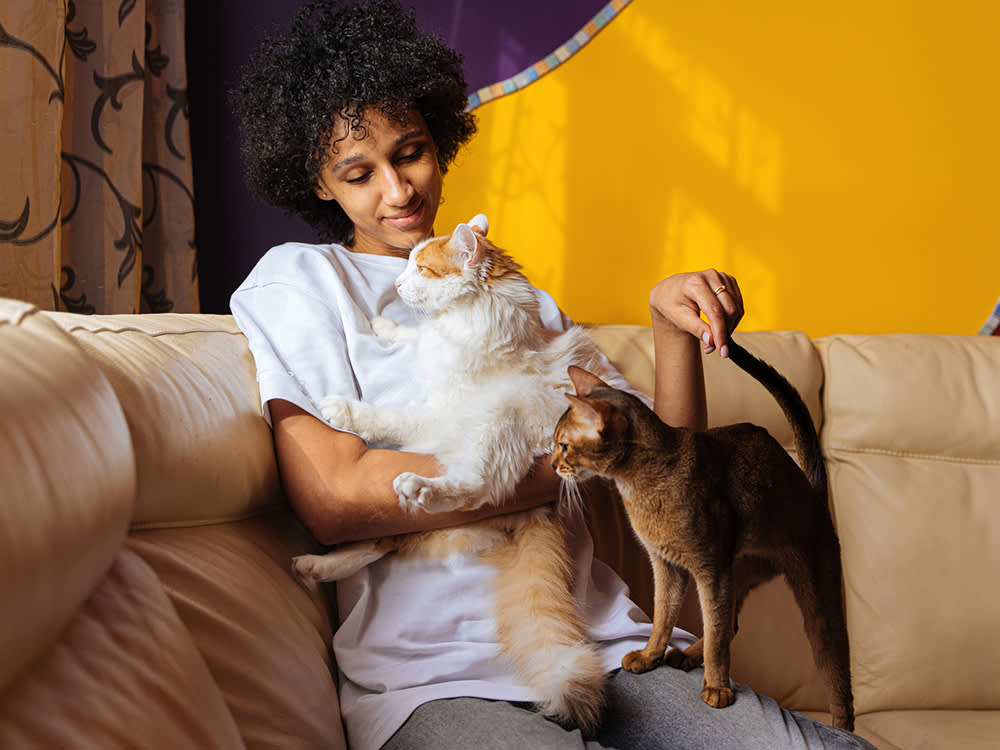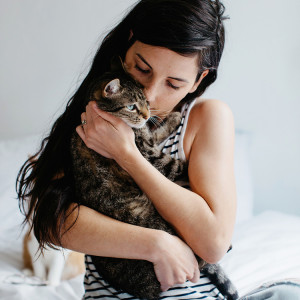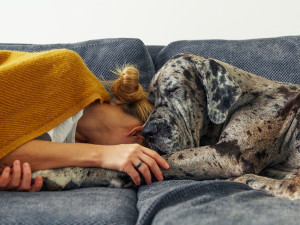Should I Adopt a Bonded Pair?
Some besties are inseparable, and that’s not always a bad thing

Share Article
You fell in love with an adorable Basset Hound: he has short legs, long ears, a trail of saliva hanging from his jowls and a howl that can be heard for blocks. And he also has a best friend who needs a home. In fact, his adoption profile reads: “Bonded to his brother and the pair must be adopted together.” Adopting a single animal is a major commitment, so the idea of adopting a twosome might feel overwhelming. But bonded pairs – two animals who have special, deep relationships – offer several advantages. When you come across two dogs, two cats or a mixed-species duo that have a meaningful connection, consider a double adoption.
Dr Gary Weitzman, president and CEO of the San Diego Humane Society, advises: “Keeping a bonded pair together when adopted ensures they have the security and comfort of each other during what can be a stressful situation. They can be there for each other during the transition period into a new home.”
What is a bonded pair?
Not all animals who live together are bonded. In fact, Dr Weitzman notes that there are cases when two pets from the same household are surrendered to the shelter but are better off being separated.
Bonded pairs, on the other hand, share a special connection. These animals will typically sleep together, play together, eat at the same time and protect each other if one shows duress. Sometimes the tight twosomes are littermates who grew up together, while other bonded pairs have lived together for long periods and formed a strong relationship. Some bonded pairs might even be different species (and who doesn’t adore a cat/dog love affair)?
Rescue centres will label two animals ‘bonded’ and seek a home where they can be adopted together when the animals have a positive and healthy relationship and are at risk of becoming stressed, anxious or even depressed when they are apart. Rescue centres put extra effort towards keeping bonded pairs together, knowing that separating them could cause problems like refusing to eat, destructive behaviour or other health issues. “We have seen cases of animals who stop eating and completely shut down if removed from their other half,” says Dr Weitzman. “Keeping them together ensures they are both happy and healthy.”
Why should I adopt a bonded pair?
While it can be harder for rescue centres to find adopters willing to welcome two animals into their homes, there are some serious benefits to adopting bonded pairs. These terrific twosomes often keep each other company, engaging in day-to-day activities from eating and grooming to playing side-by-side. They’re best friends and playmates who find comfort in each other – and that familiarity can help reduce boredom, separation anxiety and unwanted behaviours like barking and chewing.
“When their person is away, they have each other,” says Dr Weitzman. “They stay entertained and you can feel comfortable knowing that your fur babies are happy at home.” Dr Weitzman also believes that bonded pairs can be more self-sufficient than pets who live solo, and the confidence that comes from having a close friend results in pets who are more affectionate and relaxed and less likely to get into trouble. “The benefits of keeping a bonded pair together outweigh the negatives, even in cases where it may take a rescue centre more time to find them a family,” he adds.
It’s also a misconception that adopting two animals creates double the amount of work. Instead, Dr Weitzman believes that animals on a similar feeding and walking schedule who also share supplies like water bowls, litter boxes, beds and toys require almost the same amount of work as caring for a single animal. However, there are some increased costs when adopting bonded pairs. Two pets means double the food and vet visits, plus twice the grooming appointments and extra fees for pet boarding or dog walkers. It also means double the companionship and fun.
Many bonded pairs easily adjust to a new home of existing pets, turning a twosome into a threesome or even a foursome. If you know you want to be a multi-pet family, adopting a bonded pair will get you to your goal faster and it offers an additional advantage. “It’s easier to adopt two animals that you know will get along,” says Dr Weitzman.
For adopters who already have another cat or dog, that pet gets two new friends – and if the bonded pair becomes too much for the existing pet, the twosome can play with each other, giving the first pet a break from their tag-team antics. Not only does keeping bonded pairs together help to alleviate the stress that comes with being surrendered to the rescue centre, but a pair of animals can provide double the joy. “Most animals thrive with companionship,” says Dr Weitzman. “Everyone needs a friend to lean on and bonded pairs have the comfort and security of something familiar – namely, each other.”

Jodi Helmer
Jodi Helmer is a North Carolina-based freelance writer who shares her home with an embarrassing number of rescue dogs and relies on four feral cats to patrol the barn. When she isn’t refilling food and water dishes, Jodi writes about animals for Scientific American, Sierra, WebMD, AKC Family Dog, Living the Country Life, and Out Here.
Related articles
![Shepherd dog playing with yellow ball at the beach]()
How to Keep Your Dog Safe At the Beach
Five tips to help your pup have fun in the sun – safely
![A woman and a dog laying close together on a couch.]()
Paging Dr Doggo
Your pup may know you’re sick before you do
![single puppy standing outside]()
Singleton Puppy Syndrome: One Puppy Litter
One doesn’t have to be the loneliest number when it comes to your dog
![cat hissing under chair]()
Cat Hissing: Fair Warning or Fighting Words?
Your cat’s hissy fit could mean ‘Don’t test me’ or ‘Let’s do this’. It’s best not to call their bluff
![A woman with dark curly hair lifting a box with a plant in a pot balanced on top to another area in the home]()
How to Prepare For an Adoption Home Visit
7 tips for acing your inspection and bringing your new pup home







